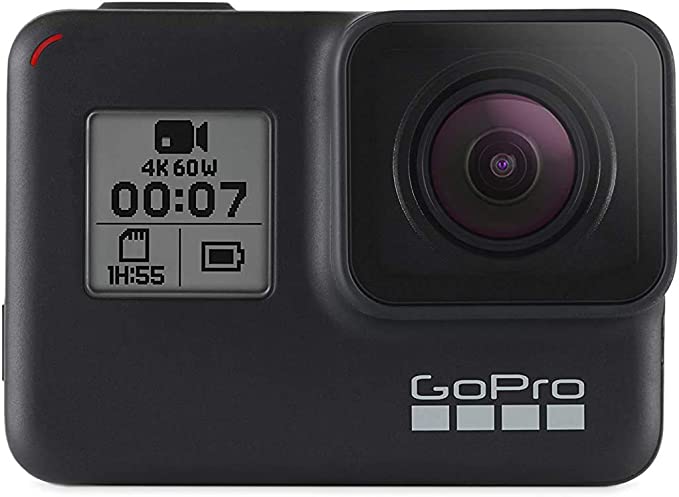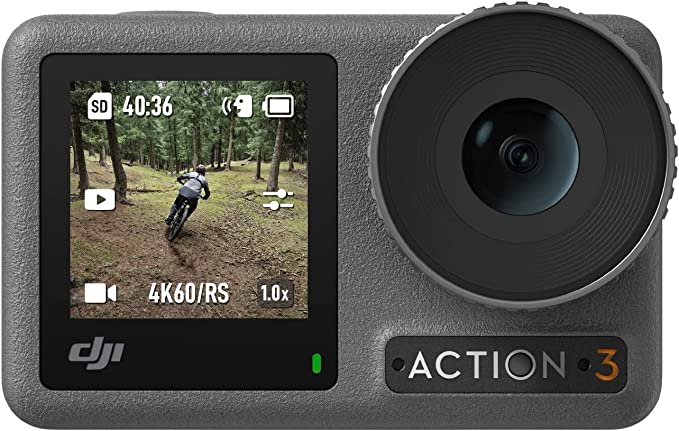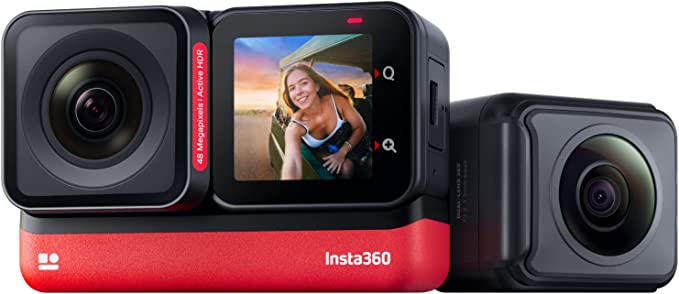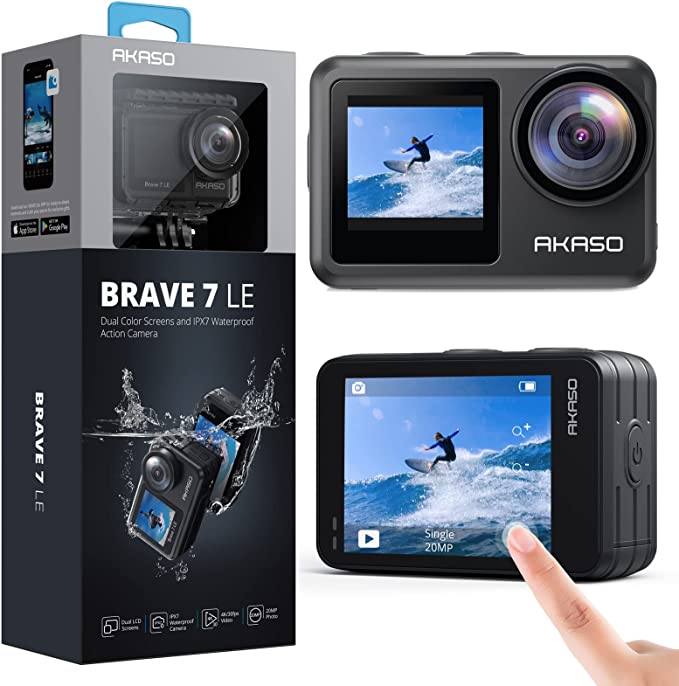"Action cameras", such as those made by GoPro , DJI , Insta360 , Olympus , and AKASO (among many others) are popular choices for filming sports due to their excellent convenience, great modularity/extensions, and suitability for capturing action-packed moments.
Many people have one laying around too, so it is definitely worth trying one out with MAS if so. You can mount these on a tripod and plug into a battery easily enough, but do take particular note that zooming regularly without a dedicated viewfinder is a big deterrent for many customers.
Advantages
Here are some things to keep in mind when considering using/purchasing an action camera for MAS:
-
Compact and lightweight: Action cameras are small, portable, and lightweight, making them easy to mount or carry and can be attached to helmets, bicycles, drones, or other gear, allowing for unique and immersive perspectives. This could be excellent for a multi-camera setup where you may attach one to a player or have one in an unusual position.
-
Wide-angle lens: Action cameras typically have a built-in wide-angle lens that captures a broad field of view. This wide perspective is ideal for capturing the expansive nature of sports activities, providing a sense of immersion and capturing more of the action within the frame. However, these wide lenses can produce a "fish eye" effect that can be annoying to watch over a long period of time.
-
Durability and ruggedness: Action cameras are designed to withstand harsh environments and extreme conditions, making them suitable for sports that involve water, snow, dirt, or other challenging environments.
-
High frame rates: and slow-motion capabilities will make for great (real-time) replays and highlight reels.
-
Image stabilisation: Many models feature advanced image stabilisation technologies, such as electronic image stabilisation or "HyperSmooth" stabilisation. These technologies help reduce camera shake and produce smoother footage.
-
Wireless connectivity and app integration: Many models offer built-in Wi-Fi or Bluetooth connectivity, allowing you to control the camera remotely using a smartphone or tablet. You can preview the footage, adjust settings, but make sure there is a way to livestream. Getting a live feed off the camera is only typically available in newer models, some will allow you to send video directly to MAS, but others may require you use a capture card.
Disadvantages
This point around connectivity is really important, getting these devices to livestream can be a bit of a chore as they often don't support SIM card/USB inputs directly, so be prepared to have to tether a phone and keep both powered to produce a reliable stream. Other drawbacks to consider too are:
-
Limited battery life: Action cameras have relatively limited battery life compared to other cameras or dedicated streaming devices. Streaming sports events can be time-consuming, and they may struggle to provide continuous power for an extended duration without the need for frequent battery changes or external power sources.
-
Overheating: Action cameras, especially when shooting in higher resolutions or frame rates, can generate a significant amount of heat. Extended live streaming sessions can exacerbate this issue, leading to potential overheating and affecting the camera's performance or even causing it to shut down.
-
Limited connectivity options: Action cameras usually rely on Wi-Fi or Bluetooth connectivity for wireless communication. Tethering is prone to interrupts/disconnects and these devices do not typically have built-in cellular connectivity or dedicated streaming features.
-
Audio limitations: Action cameras have built-in microphones that capture audio, but these are often poor quality.
-
Limited streaming control and customisation: The apps the manufacturers do provide provide little in the way of controlling the stream and its quality - its usually "on" or "off".
-
Lack of real-time monitoring/viewfinders: Action cameras typically do not provide a built-in screen or viewfinder for real-time monitoring during live streaming. This can make it challenging to ensure the framing, focus, and overall quality of the stream while broadcasting a sports event.
Devices
The following is by no means exhaustive, and many manufacturers are making continuous improvements in this area, but this is a lay-of-the-land which is a bit messy. The easiest thing to do is plug in an HDMI cable and get a naked feed using an HDMI capture card - but this is often not possible and is instead controlled by the camera/manufacturer's app instead, in which case please check out our documentation on creating a fixed device in your admin platform.
GoPro
Livestreaming on a GoPro is only available on the HERO7 Black and newer devices and has to be controlled from the GoPro Quik app.
DJI
Livestreaming on an OSMO Action may require a software update as is handled via the DJI Mimo app.
Insta360
Livestreaming on an Insta360 requires a constant connection to your phone/tablet on the ONE app.
AKASO
Livestreaming on an AKASO device varies by device but generally require plugging into a computer and using it in "PC Camera" mode.
Olympus
Livestreaming on an Olympus device has very limited compatibility and requires an HDMI capture card. Most Olympus devices do not produce a clean output and are thus not recommended.
These devices are marked as compatible by Olympus (none are actually action cameras...):




